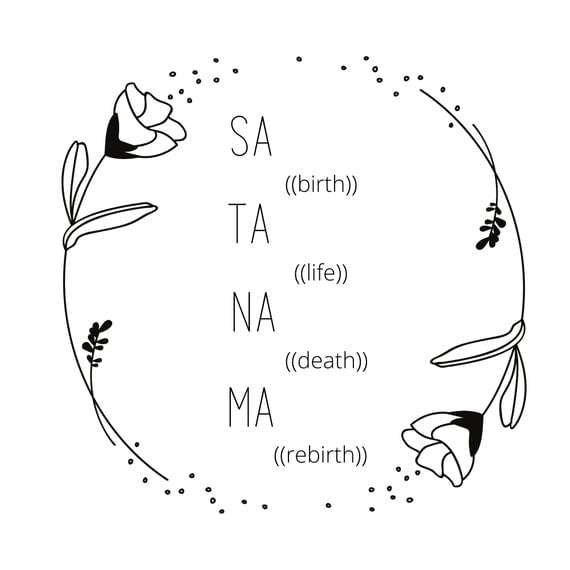While those who practice short bouts of daily meditation—including this writer, who used Headspace for years, but has graduated to a basic timer—will tell you that it’s an amazing way to “stretch” your brain, zone out, center your thoughts, and steady yourself for practically everything to come that day, the science touting the benefits of this form of bite-size meditation is still being conducted in real-time. Well, a new study just published last month in the journal IOS Press looks a much of the available and existing research on the benefits of meditation, and it contains some remarkable analysis and observations for people who meditate and for people who may wish to start. Read on for more about this study, and for more amazing things you can do for your brain, don’t miss the Incredible Things That Happen When You Walk More, Say Experts.
1. Connecting “Spiritual Fitness” and Cognitive Decline
The research was led by Dharma Singh Khalsa, MD, of the Alzheimer’s Research and Prevention Foundation in Tucson, AZ, and Andrew B. Newberg, MD, of the Department of Integrative Medicine and Nutritional Sciences at the Marcus Institute of Integrative Health at Thomas Jefferson University, in Philadelphia, PA. The purpose of their research was to discover “how religious and spiritual involvement may prevent Alzheimer’s Disease,” while noting that meditation is a major component of this.
The type of meditation that the doctors focus on here is Kirtan Kriya, a “12-minute singing meditation that involves four sounds, breathing, and repetitive finger movements.” (Keep reading to learn how to do it.) And for more on the connection between your mind and your body, see here for The Secret Side Effects of Exercise You Didn’t Know, Says Scientist.

2. Here Are the Benefits of Performing 12-Minutes of Kirtan Kriya Every Day
There are a lot of them. Khalsa and Newberg describe Kirtan Kriya has the “bridge between stress and spiritual fitness,” and note two decades of research into the practice reveal that “KK” is super effective at lowering anxiety while boosting sleep.
What’s more, according to the paper published in IOS Press, the effects of performing 12 minutes of KK every day include “increased gray matter volume” in the brain, “upregulation of immune function,” “increased cerebral blood flow to significant brain areas,” “increased synaptic function” in the brain, and a reduction in “multiple risk factors for Alzheimer’s Disease.”
That’s not all. Some notable “outcomes” include “less stress,” “better sleep,” “less inflammation,” “increased wellbeing,” “reversal of memory loss,” “enhanced executive function,” and “enhanced mood with less anxiety and depression.”

3. Meditation Targets the Parts of Your Brain That Decline Via Alzheimer’s
According to their study, Khalsa and Newberg note that the practice of meditation activates the prefrontal cortex, the frontal lobe, and the anterior cingulate gyrus of the brain. They explain that “diminished” prefontal cortex activity is associated with mild cognitive impairment. But they note that “the activation of the posterior cingulate gyrus is the most relevant” because it is “critically” important for “many types of memory and emotional functions.” Less activity and blood flow there is an early sign of Alzheimer’s.
In other words, the practice of meditation appears to target—head-on—many of the key areas of the brain associated with cognitive decline. “Mitigating the extensive negative biochemical effects of stress with meditation practices, in tandem with the creation of heightened levels of spiritual fitness, may help lower the risk of [Alzheimer’s Disease],” conclude Khalsa and Newberg. “Small shifts in one’s daily routine can make all the difference in AD prevention.” And for more great advice, see here for The Secret Side Effects of Stretching Before Breakfast, Say Experts.

4. Here’s How to Do KK
Here’s a handy primer to Kirtan Kriya, courtesy of the Alzheimer’s Research & Prevention Foundation:
Step One: Sit with your spine straight and your eyes closed and repeat the ‘Saa Taa Naa Maa’ mantra. “With each syllable, imagine the sound flowing in through the top of your head and out the middle of your forehead (your third eye point).”
Step Two: “For two minutes, sing in your normal voice.”
Step Three: “For the next two minutes, sing in a whisper.”
Step Four: “For the next four minutes, say the sound silently to yourself.”
Step Five: You’ll now reverse the order here, going backwards. Whisper for two minutes, then out loud for two minutes, “for a total of twelve minutes.”
Step Six: “To come out of the exercise, inhale very deeply, stretch your hands above your head, and then bring them down slowly in a sweeping motion as you exhale.”

– eatthis.com –

